
Feel free to add tags, names, dates or anything you are looking for
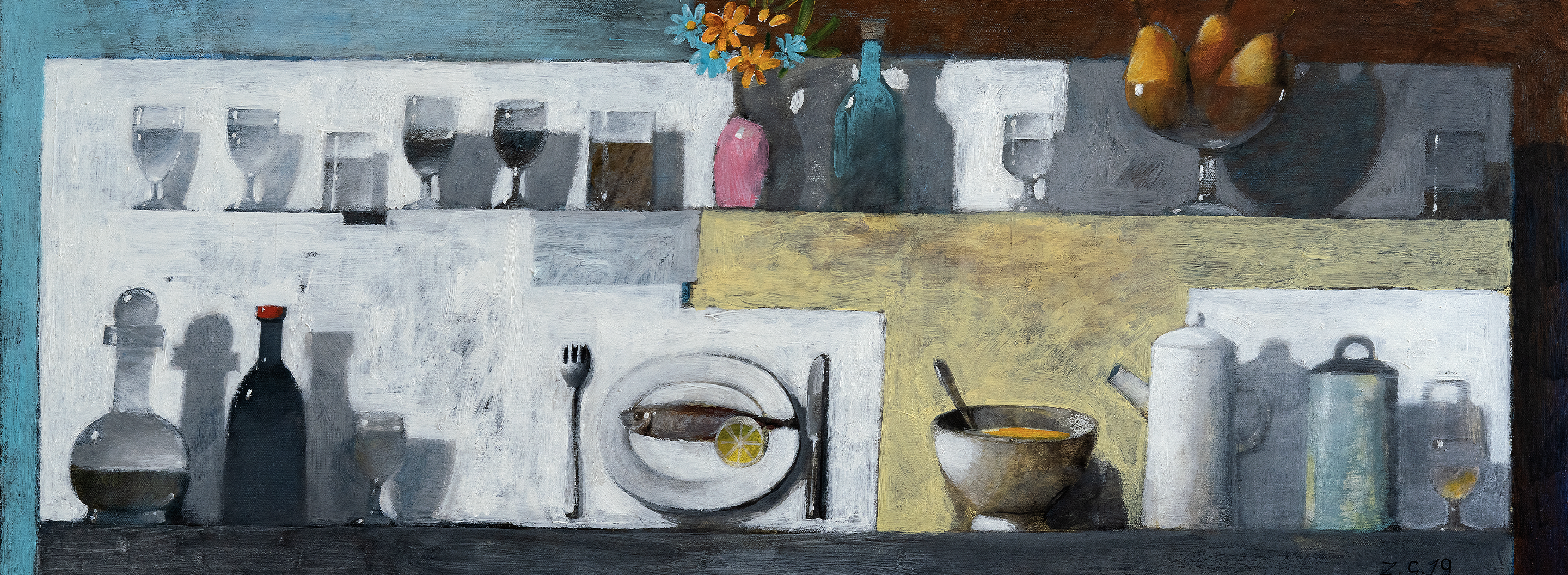

Among many exhibitions in which Zurab Gikashvili (ზურაბ გიკაშვილი) participated, one of the first is distinguished by names of great significance in the artistic world. This exhibition was held in 1992 at the Gibellina Museum of Contemporary Art. It was organized by Markus Lüpertz, Achille Bonito Oliva, Carla Accardi, and Francesco Messina.

Zurab Gikashvili. Chairs. Oil, tempera, canvas. 110x130 cm. 2020. This work is part of ATINATI Private Collection
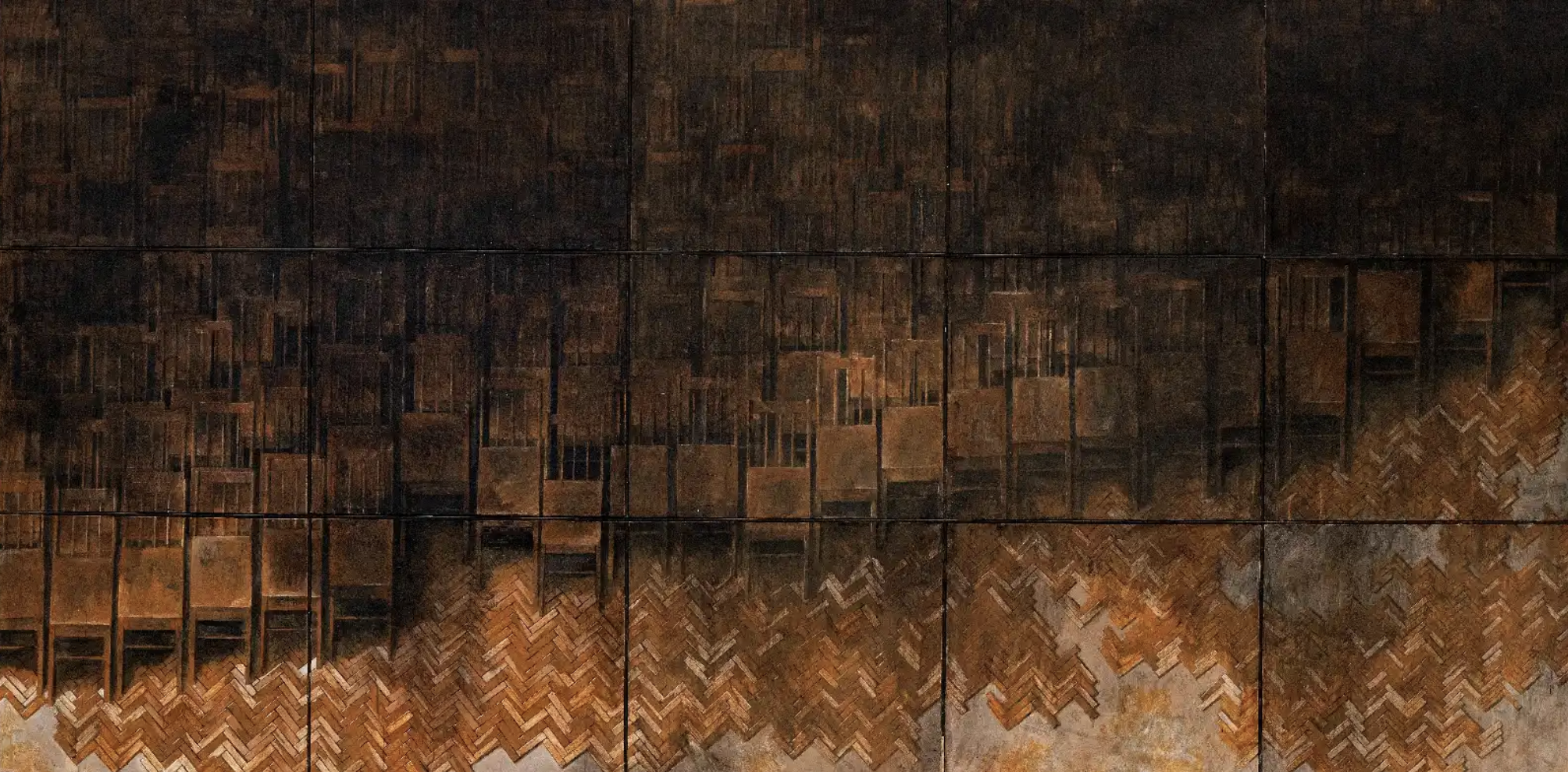
Zurab Gikashvili. Chairs. Oil, canvas, tempera, mixed media. 150x300. 2021. This work is part of ATINATI Private Collection
Zurab Gikashvili graduated from the Tbilisi State Academy of Arts in 1992. Meeting people who were involved in the central processes of contemporary painting was both impressive and inspiring for the young artist. From this time on, his interest in Italian trans-avant-garde and German representatives of Neo-Expressionism grew. Against this backdrop, the sources of expressive motifs in the artist's work become clear. All of Zurab Gikashvili's paintings are expressive – even the seemingly peaceful and idyllic landscapes, which reveal a certain melancholy when examined carefully.

Zurab Gikashvili. Landscape. Oil, canvas. 110x130. 2002. Photo by Gia Chkhatarashvili
Gikashvili painted many different types of landscape, and each possesses a unique style and mood. The works, where the main goal is the accuracy of the atmosphere and the portrayal of light, demonstrate the artist's interest in the historical development of this genre. It is particularly visible in the marine paintings. All these landscapes masterfully recreate what is visible when viewing different pieces of work together.

Zurab Gikashvili. Composition rabbit. Oil, relief-paste, canvas. 90x200. 2002. Photo by Gia Chkhatarashvili
Expressiveness is especially vivid in his graphic paintings – in the series that features multi-figure scenes where ambiguous situations unite groups of naked, vulnerable people. On certain occasions, it appears to be a ritual or a strange gathering. The sense of fatality, the spontaneous unity of bewildered and helpless people who seem to gather there unwillingly, unites these paintings. Existential accents are also perceived in the portraits and self-portraits that Zurab Gikashvili produced. Through meditation and self-concentration, he expresses himself and these other people precisely, capturing their psychological sensitivity and emotional emptiness.
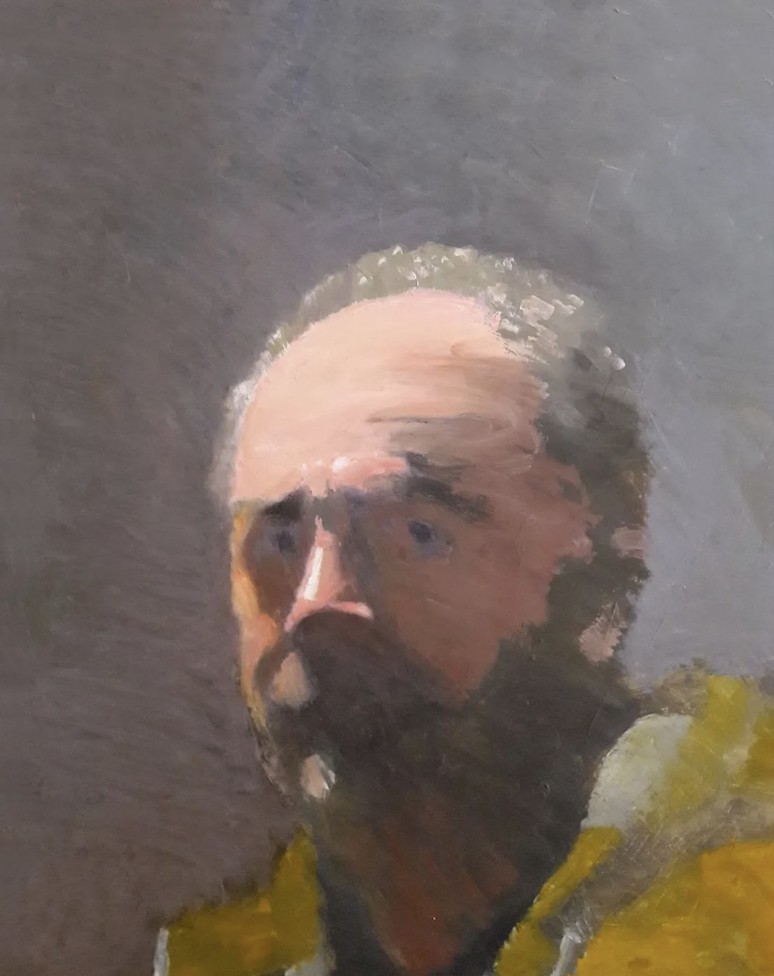
Zurab Gikashvili. Self-portrait. Oil, paper. 60x50. 2017
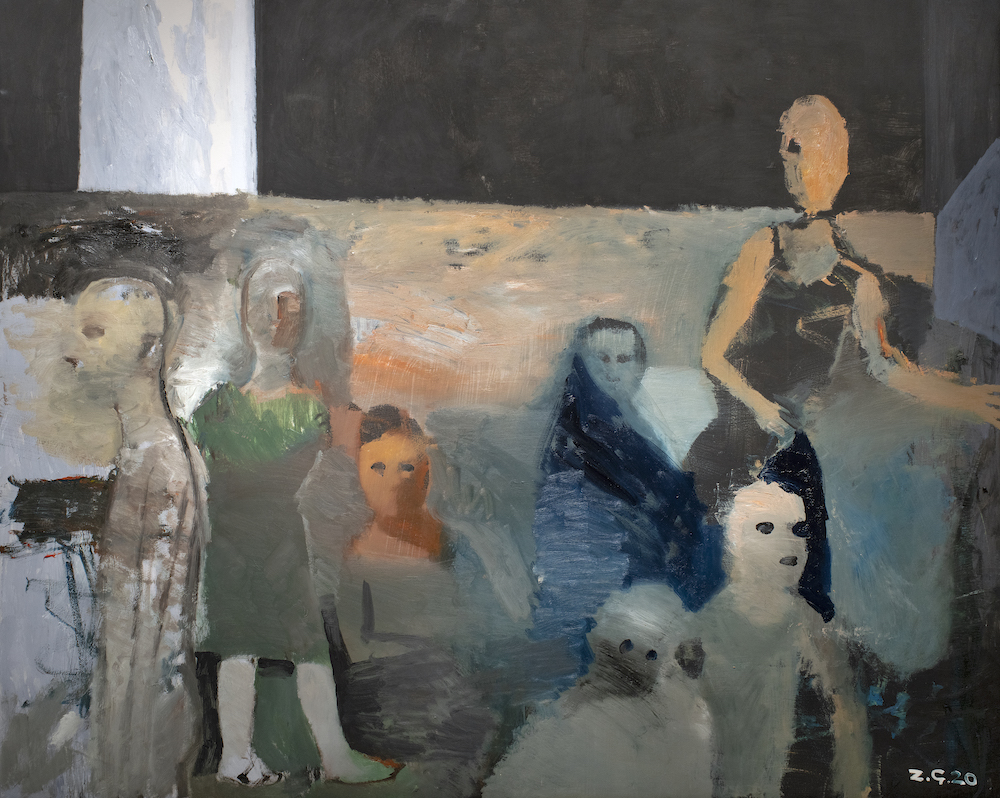
Zurab Gikashvili. Street. Oil, canvas. 170x140. 2021. Photo by Gia Chkhatarashvili
His series of still life paintings continues the existential theme; the objects have a specific relationship to each other and to the space: bottles, glasses, pots and other items are depicted using various angles, backgrounds and intervals, and demonstrate the interaction between object and space in endless variations.
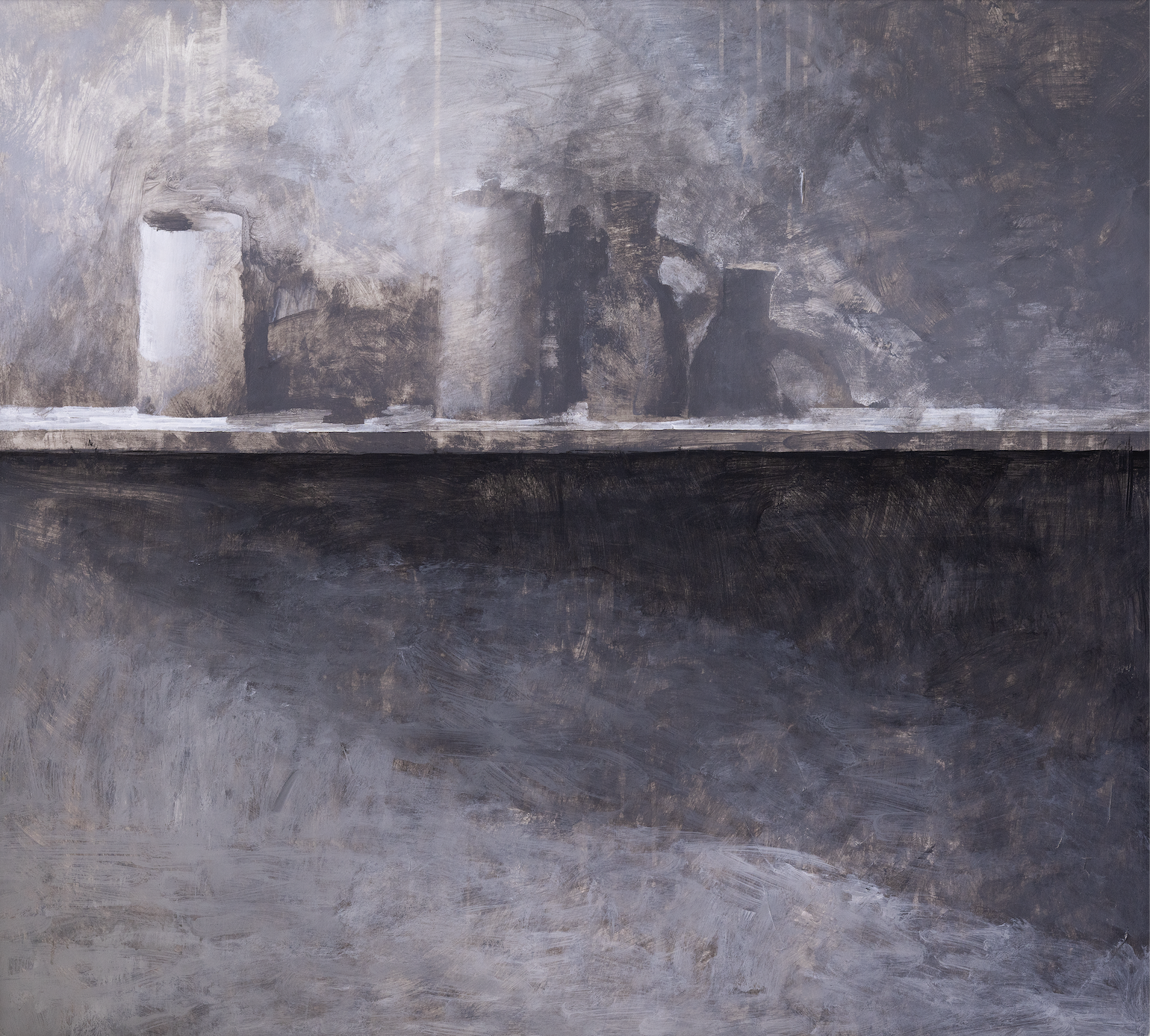
Zurab Gikashvili. Grey Still Life. Acrylic, oil, canvas. 88x98. 2019. This work is part of ATINATI Private Collection

Zurab Gikashvili. Still life with Scull. Oil, canvas. 90x200. 2018
At present, Zurab Gigashvili is working on a canvas that summarizes the author's version of still life. It is a large-scale and complex composition of the billboard type; the varied separate items produce a weighty dramatic effect with sacrificial associations; the pair of windows is reminiscent of a surrealistic vision and, with its multi-faceted fresco associations, combines different themes and moods.
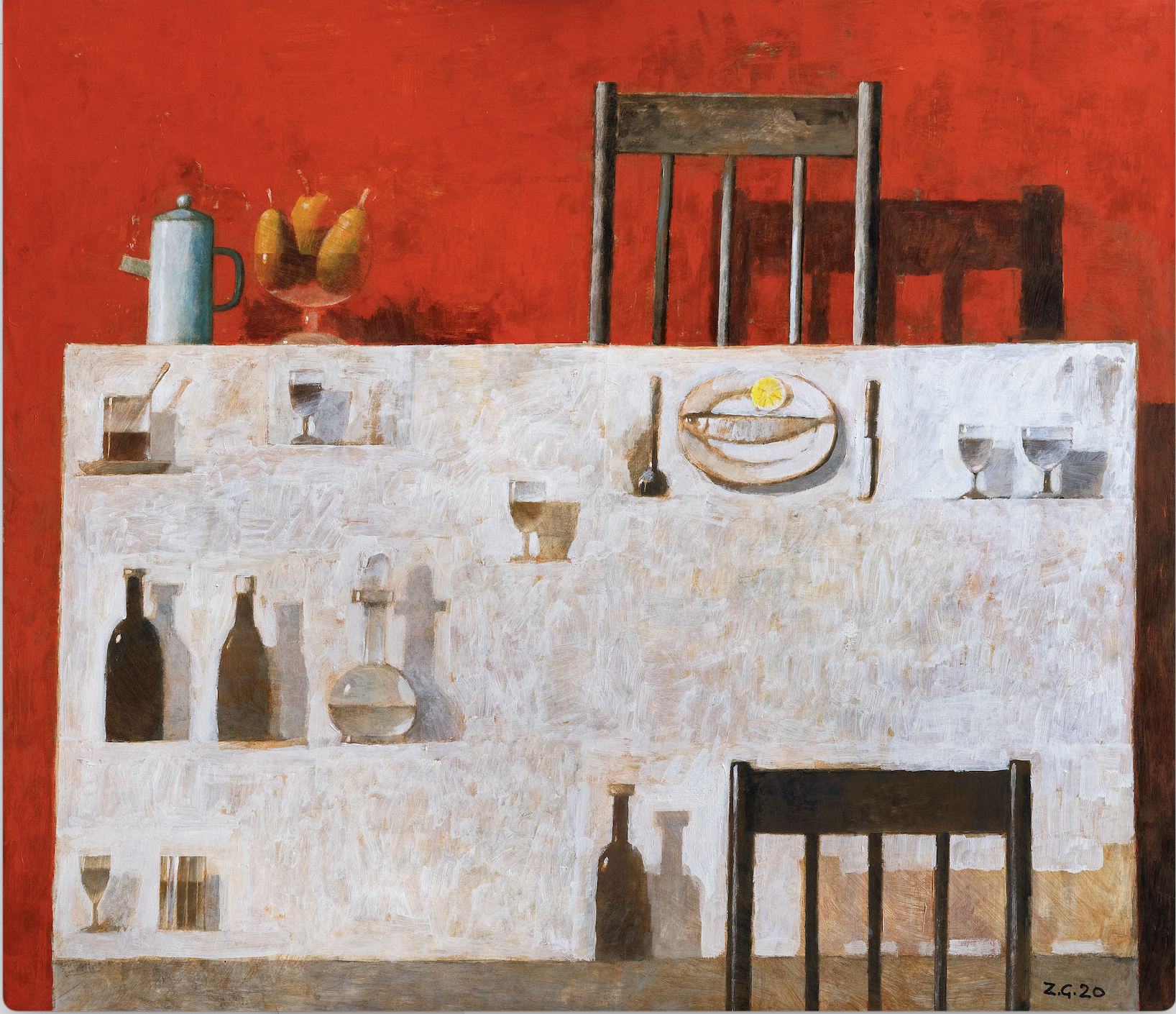
Zurab Gikashvili. Still life on a Red Background. Tempera, oil, canvas. 104x119. 2020. This work is part of ATINATI Private Collection
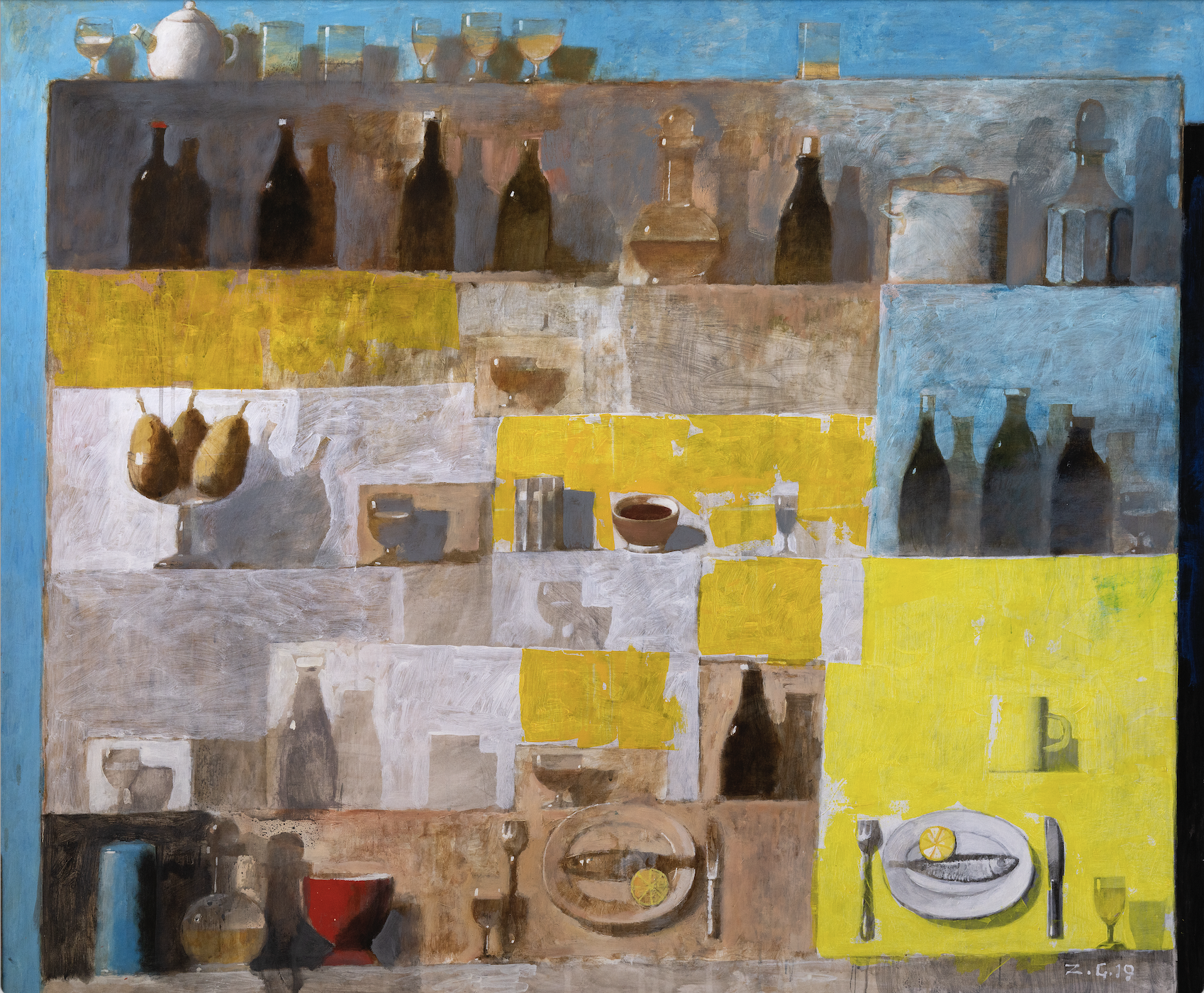
Zurab Gikashvili. Still life. Oil, tempera, canvas. 110x130 cm. 2019. This work is part of ATINATI Private Collection
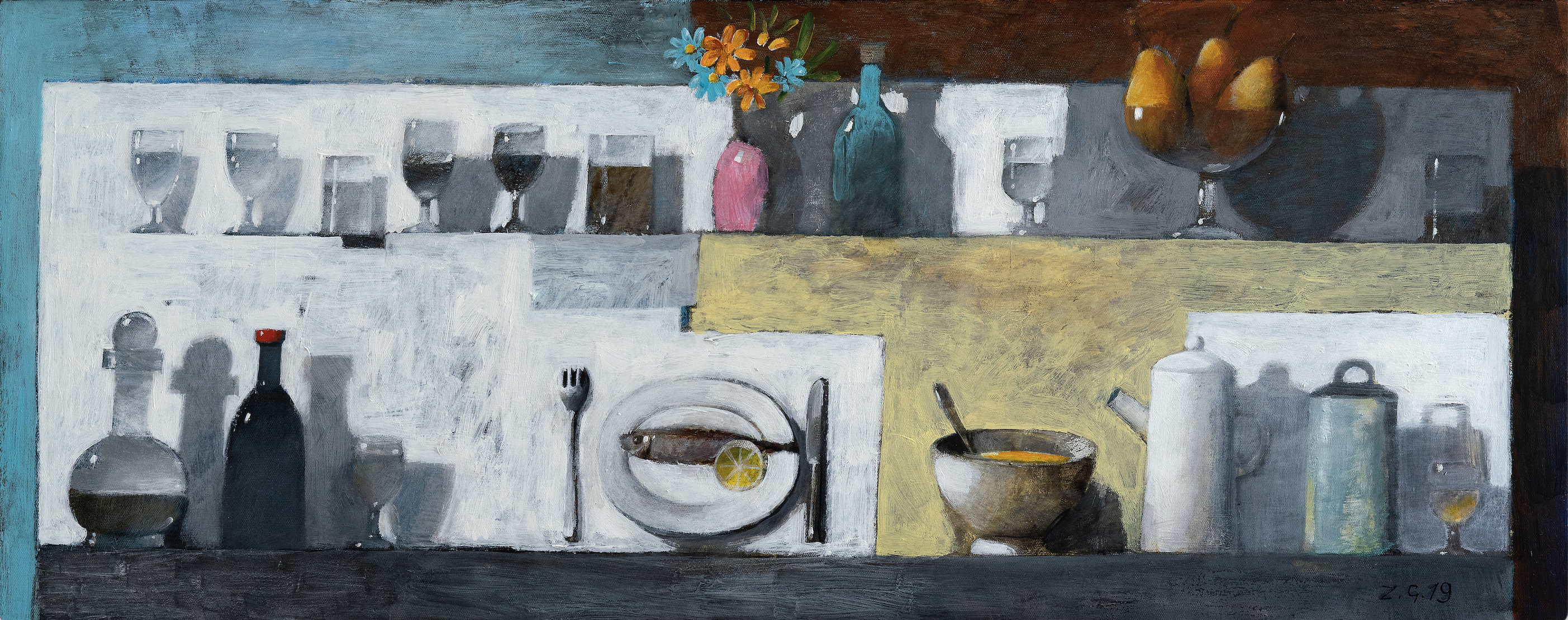
Zurab Gikashvili. Still-Life with Fish. Oil, canvas. 40x100. This work is part of ATINATI Private Collection
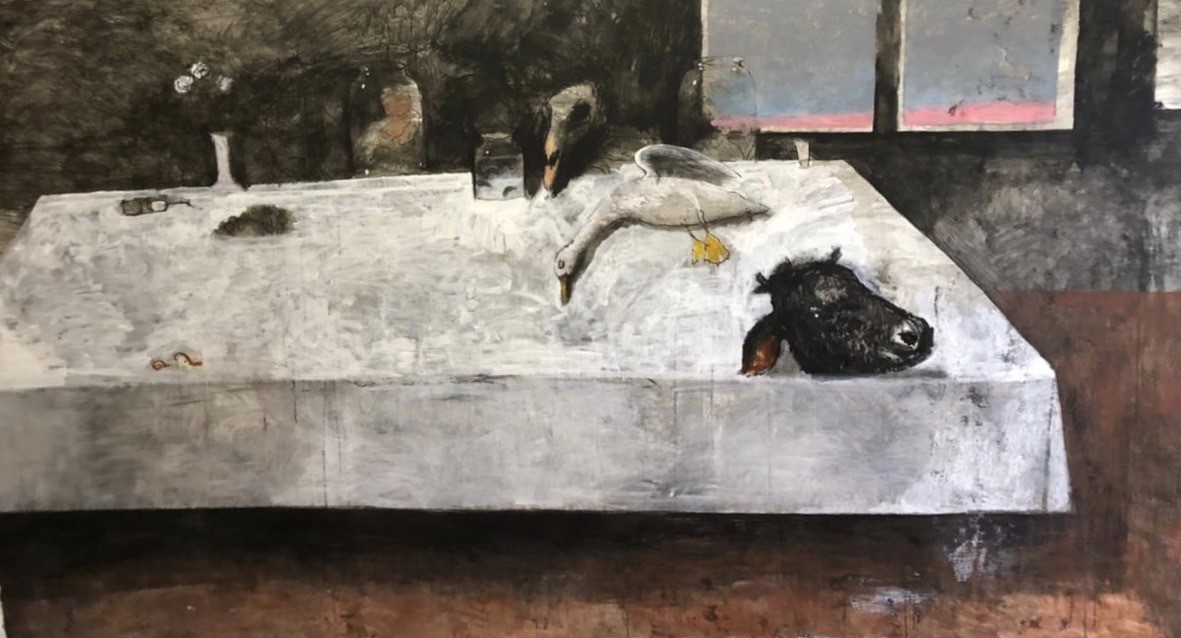
Zurab Gikashvili. Evening. Oil, tempera, canvas. 90x200. 2021
The window is a standard feature of his compositions, not only of this one. In general, the window theme has a conceptual significance in his painting. The world seen from a window is associated with different moments from his biography, with landscapes, moving people or animals, and various items placed on the windowsill. They seem to function as memory repositories, and hold determinate stories.